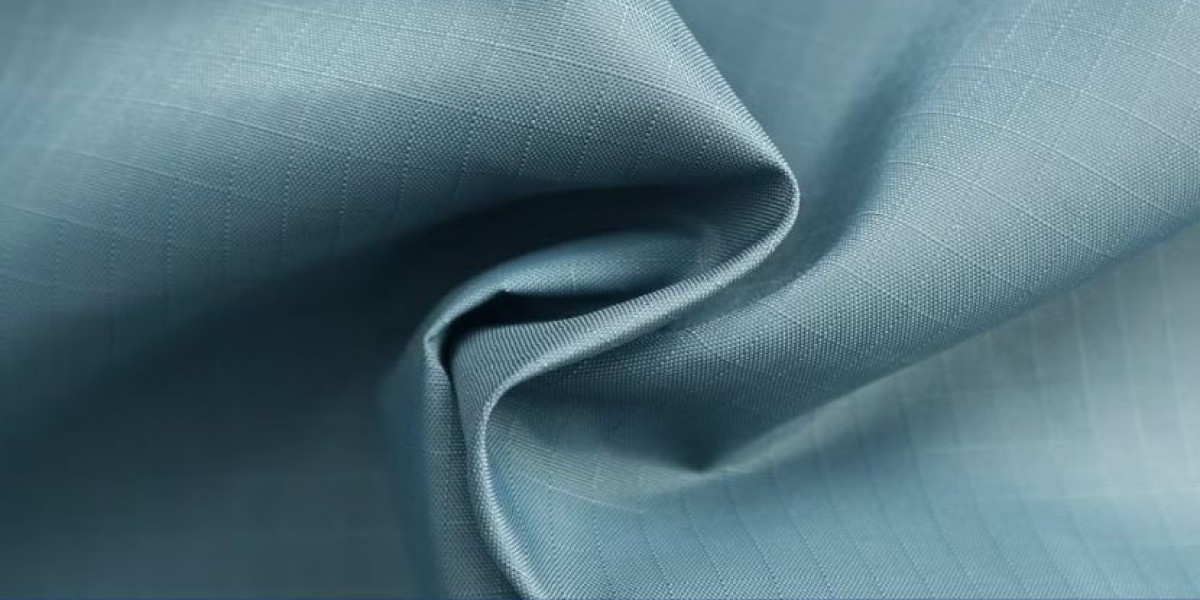Introduction
Nylon fabric is one of the most versatile synthetic fibers used in a wide range of applications, from clothing to industrial products. With its strength, durability, and flexibility, nylon is in high demand across industries, including textiles, automotive, and sports. This Nylon Fabric Manufacturing Plant Project Report provides an in-depth look into the essential components of setting up a nylon fabric manufacturing plant, covering market demand, production processes, raw materials, machinery, and financial considerations.
Market Outlook
The global demand for nylon fabric has surged in recent years due to its wide range of uses in multiple industries. The growing demand for apparel, sportswear, and home textiles, combined with the increasing use of nylon in automotive and industrial applications, has fueled the growth of the nylon fabric market.
Key factors contributing to the market’s growth include:
- Rising Demand in Fashion and Apparel: Nylon fabrics are lightweight, durable, and water-resistant, making them ideal for various clothing items like jackets, activewear, and hosiery.
- Increasing Applications in Industrial and Automotive Sectors: Nylon fabrics are also used in industrial applications, including ropes, filters, and tire cords, and in automotive industries for seat covers and interior trims.
- Technological Advancements: Innovations in nylon production technology have improved the quality and range of nylon fabrics, making them more versatile for various applications.
Raw Materials Required for Nylon Fabric Manufacturing
The production of nylon fabric begins with the synthesis of nylon fibers. The main raw materials involved in the production process are:
- Nylon Polymer (Polyamide): The primary raw material required to make nylon fabric is nylon polymer, which is produced through a polymerization process. The two main types of nylon polymers used in fabric manufacturing are Nylon 6 and Nylon 66.
- Catalysts and Additives: Chemical catalysts and stabilizers are used in the polymerization process to control the reaction and improve the quality of the fiber.
- Dyeing and Finishing Chemicals: Dyes, resins, and other finishing agents are used to color and enhance the appearance, texture, and functionality of the nylon fabric.
Get a Free Sample Report with Table of Contents@
Production Process
The production of nylon fabric involves several steps, from polymerization to fabric weaving or knitting. Below is a breakdown of the key stages:
1. Polymerization
The first step in nylon fabric production is polymerization, where chemicals like hexamethylenediamine and adipic acid (for Nylon 66) or caprolactam (for Nylon 6) are reacted together to form the nylon polymer. The polymer is heated to a molten state and then extruded into fibers.
2. Spinning
After polymerization, the molten nylon is spun into fibers through a process known as melt spinning or dry spinning. The spinning process involves forcing the molten polymer through spinnerets (devices with tiny holes) to form continuous fibers. These fibers are cooled and solidified before being wound onto spools.
3. Drawing and Texturizing
The spun fibers undergo a process called drawing, where they are stretched to increase their strength and elasticity. This process also helps to align the polymer chains in the fiber, improving the fabric’s durability and flexibility. Texturizing is done to give the fibers a specific texture or appearance, such as crimping, which makes them more suitable for weaving or knitting.
4. Weaving or Knitting
Once the nylon fibers are ready, they are woven or knitted into fabric. In weaving, the fibers are interlaced at right angles to form a fabric, while in knitting, the fibers are looped together. The type of fabric produced depends on the weaving or knitting method used, such as plain weave, twill weave, or jersey knit.
5. Dyeing and Finishing
The fabric undergoes dyeing, where it is treated with colorants to achieve the desired color and design. Additional finishing treatments, such as water-repellent or anti-wrinkle finishes, can also be applied to enhance the fabric’s performance and aesthetic appeal.
6. Quality Control
Before packaging and shipping, the nylon fabric undergoes thorough quality control checks. This includes testing for tensile strength, elasticity, color consistency, and defects like snags or holes. Only fabric that meets the required standards is sent for packaging.
Machinery and Equipment Required for Nylon Fabric Manufacturing
A nylon fabric manufacturing plant requires several pieces of machinery and equipment to ensure the production process is efficient and produces high-quality fabric. Some of the key machines involved are:
- Polymerization Reactors: Used to carry out the chemical reactions to form the nylon polymer.
- Extruders: Machines that melt and extrude the nylon polymer into fiber filaments.
- Spinning Machines: Machines used to spin the molten polymer into nylon fibers.
- Drawing and Texturizing Machines: These machines stretch and add texture to the fibers to enhance their properties.
- Weaving or Knitting Machines: Machines used to create the fabric by weaving or knitting the nylon fibers.
- Dyeing and Finishing Equipment: These machines are used to apply color and finishes to the fabric to meet customer specifications.
- Inspection and Quality Control Equipment: Instruments to test and inspect the fabric for quality, ensuring it meets all required standards.
Plant Layout and Design Considerations
The layout of a nylon fabric manufacturing plant should be designed to optimize workflow and minimize downtime. Key considerations include:
- Raw Material Storage: The plant should have adequate storage space for chemicals and nylon polymers, ensuring proper handling and safety.
- Production Area: The production area should be organized into sections for polymerization, spinning, drawing, weaving/knitting, and dyeing/finishing.
- Quality Control Area: A dedicated quality control area should be established to monitor product quality at every stage of production.
- Packaging and Shipping: The packaging area should be designed to quickly package the finished fabric for distribution and sale.
Labor Requirements
A nylon fabric manufacturing plant requires skilled workers at different stages of production. The main categories of labor required include:
- Production Workers: These employees are responsible for operating machines in the polymerization, spinning, and weaving/knitting sections.
- Quality Control Inspectors: These workers are responsible for testing the fabric and ensuring it meets the required standards.
- Maintenance Technicians: Skilled workers are needed to maintain and repair machinery to ensure the production process runs smoothly.
- Administrative and Sales Staff: These employees handle the administrative functions, including procurement, sales, and marketing.
Cost Estimation and Financial Analysis
Setting up a nylon fabric manufacturing plant requires substantial capital investment. The main cost components include:
- Initial Investment: This includes the cost of land, building construction, and setting up the production facility.
- Machinery and Equipment: The cost of purchasing and installing the required machinery for spinning, weaving, dyeing, and finishing.
- Raw Materials: The cost of nylon polymers, chemicals, dyes, and other materials required for production.
- Labor Costs: The wages of skilled workers, technicians, and other staff involved in the manufacturing process.
- Operational Costs: Ongoing expenses for utilities, maintenance, and administrative costs.
- Revenue Projections: The potential revenue from the sale of nylon fabric will depend on production capacity, demand, and market pricing.
Marketing and Distribution Strategy
A strong marketing and distribution strategy is essential for the success of the nylon fabric manufacturing plant. The following strategies can be employed:
- Targeting Apparel Manufacturers: Nylon fabric is widely used in clothing and apparel. Establishing relationships with clothing brands and manufacturers can ensure consistent demand for the product.
- Exploring Industrial Markets: Nylon is also used in industrial products such as seat belts, ropes, and filters. Tapping into these markets can help diversify the customer base.
- Online Marketing: A robust online presence can help attract smaller buyers, wholesalers, and retailers interested in purchasing nylon fabric.
Media Contact
Company Name: Claight Corporation
Contact Person: Lewis Fernandas, Corporate Sales Specialist — U.S.A.
Email: sales@expertmarketresearch.com
Toll Free Number: +1–415–325–5166 | +44–702–402–5790
Address: 30 North Gould Street, Sheridan, WY 82801, USA
Website: www.expertmarketresearch.com
Aus Site: https://www.expertmarketresearch.com.au






